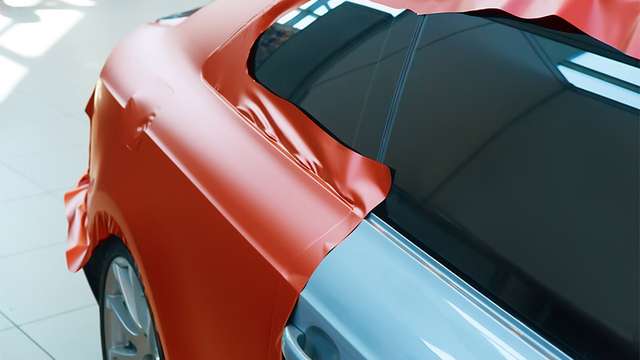- top tips
What does it mean to wrap a car?

Updated 11 Oct 2019
Joel Ilton

In the past, if you wanted to change the colour of your vehicle a full respray was required.
This involved stripping the car back, removing all the old paint and then applying the new colour before putting it all back together.
Not only was this labour intensive, often taking weeks from start to finish, but it was also super expensive, costing $10,000 or more for a proper job.
Even then, there were some limitations with what could be done.
These days, however, changing your vehicle’s paint job, or even creating custom graphics and finishes, is much easier thanks to vinyl wrapping.
Mainstream vinyl wrapping started in the early ‘90s in Germany of all places, where it was required by law to have all taxis painted beige.
Once their working life was up, the taxis would then have to be painted back to the original colour or sold at a heavy discount.
With the use of vinyl, taxis could be wrapped in beige vinyl, carry out their working lives and then have the wrap removed to reveal the original colour underneath, allowing them to be sold off for a greater sum.
This highlights another benefit of using vinyl over repainting - if you get sick of the colour you have chosen, or want to change to something else, it’s as simple as removing and replacing the vinyl wrap instead of going through the whole painting procedure again.
Most vinyl wraps are between 2mm and 4mm in thickness, depending on the style and colour chosen, and can be made to fit even the most intricate shapes on a modern supercar.
You can also get colour-changing vinyl, chrome and reflective wraps (although these may be illegal in your state) as well as clear matt vinyl that can change your paintwork to a matt finish.
Vinyl wraps are highly customisable and come in a variety of unique patterns, colours and finishes.
Another benefit to wrapping your vehicle is enhanced protection from the elements and other damage.
The added thickness of the vinyl can protect from scratches and rock chips, and fixing the damage is as simple as removing and replacing the vinyl on the required area.
A specific version of vinyl, known as paint protection film (or PPF for short) is designed to protect - hence the name - without changing the colour or texture of the paintwork.
When PPF is done well, you’d be hard pressed to tell it was even there!
The process for wrapping a vehicle is similar to what happens when a vehicle is resprayed.
Most exterior trims and lighting need to be removed to allow for a seamless wrap, and the paintwork needs to be fully cleaned and decontaminated before any wrapping can commence.
The vinyl is pre-cut to suit the vehicle and is then applied panel by panel. A heat gun is used to help ‘shape’ the wrap around the panels, and the whole car is put back together to complete it’s new look.
So, if your vehicle is looking a bit sad and you want to change up the colour or finish or personalise it by putting a picture of your favourite pet on the bonnet, vinyl wrapping is a great alternative to completely repainting your car.
And if you change your mind, it’s a simple process to remove and to return the vehicle back to its factory appearance.

Written By
Joel Ilton
Finding a passion for cars from a young age, Joel carried out work experience as a mechanic whilst at school before starting an apprenticeship after finishing year 12.
Joel is now the Workshop Manager at Robina Volkswagen.